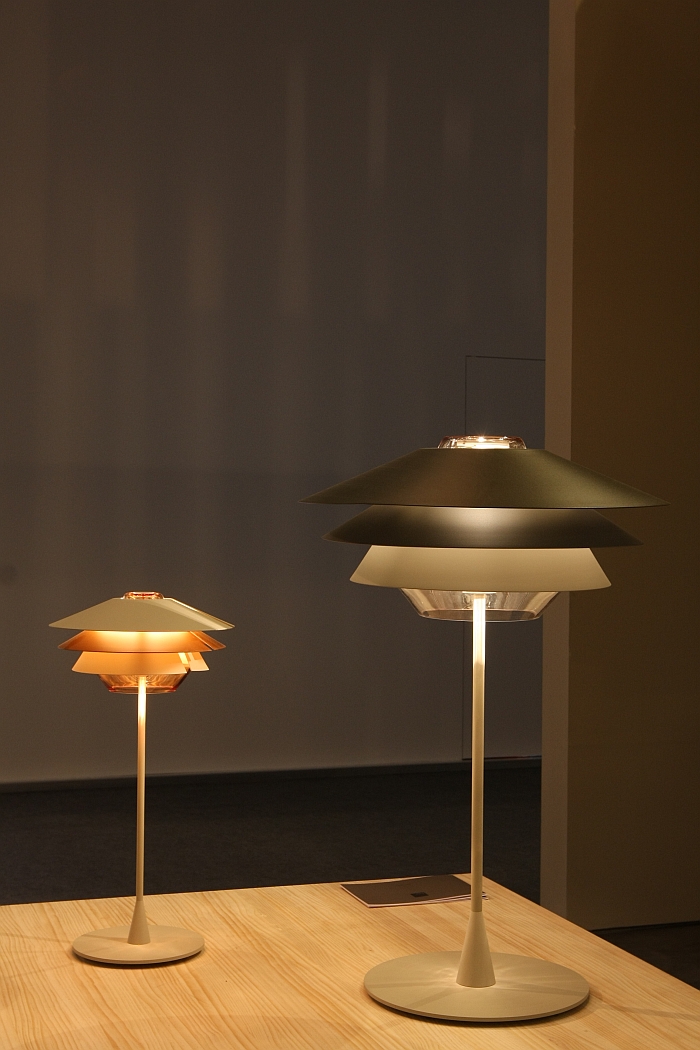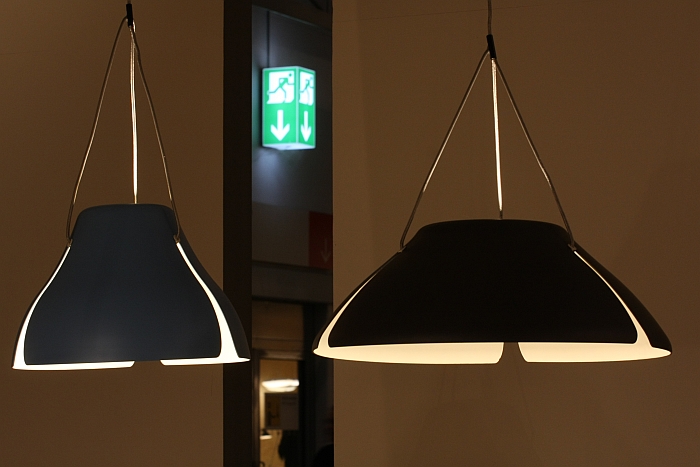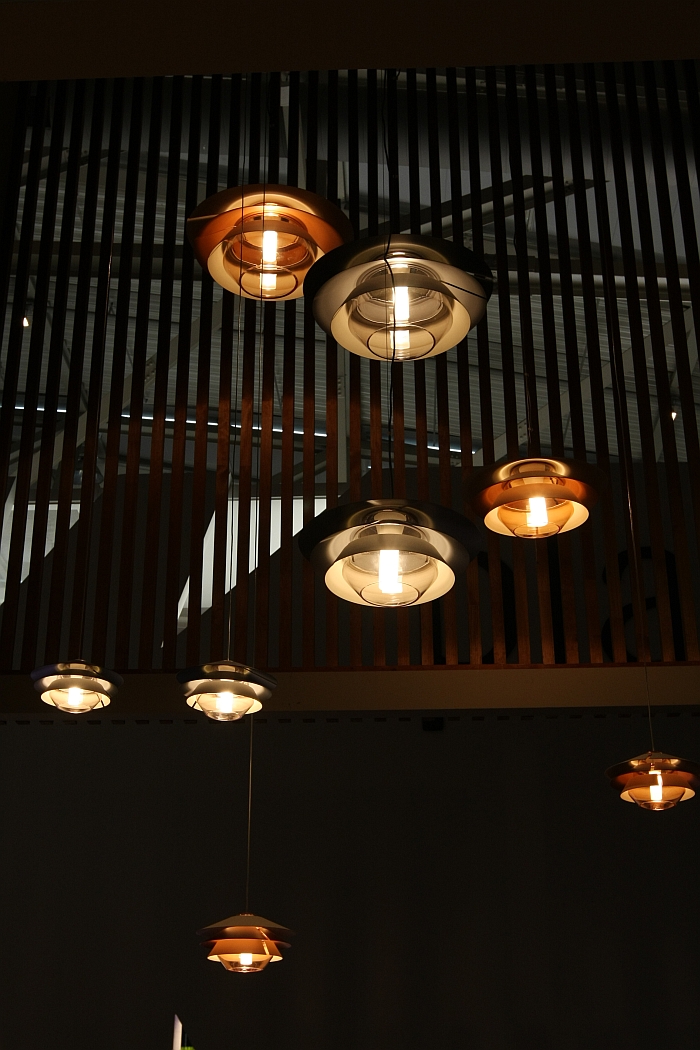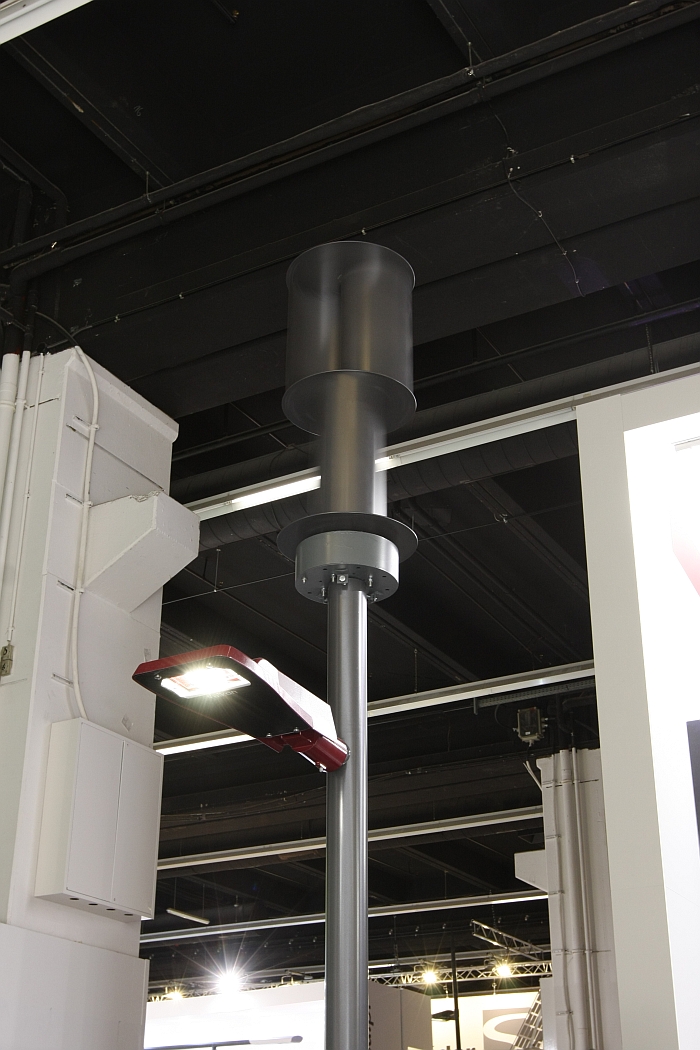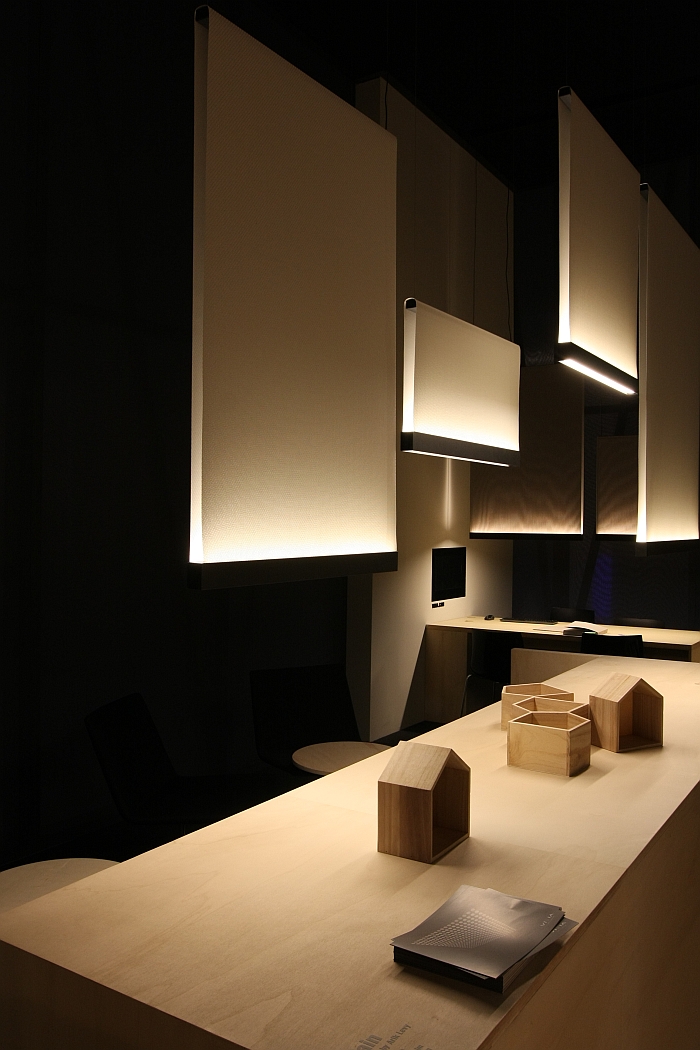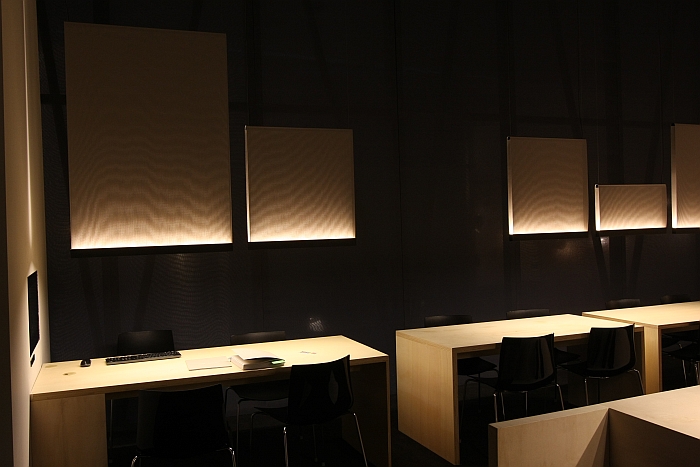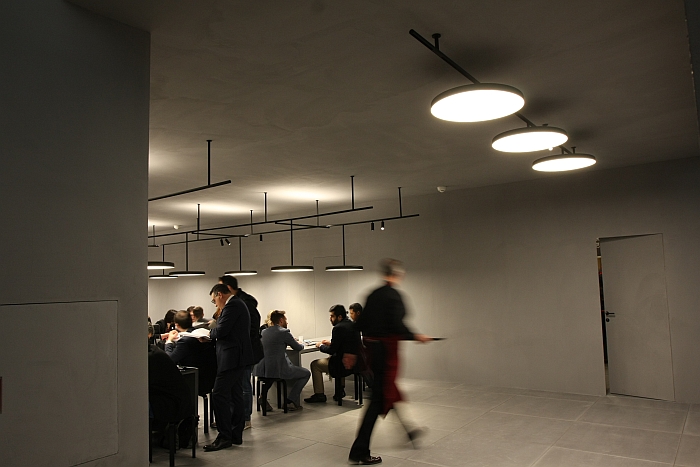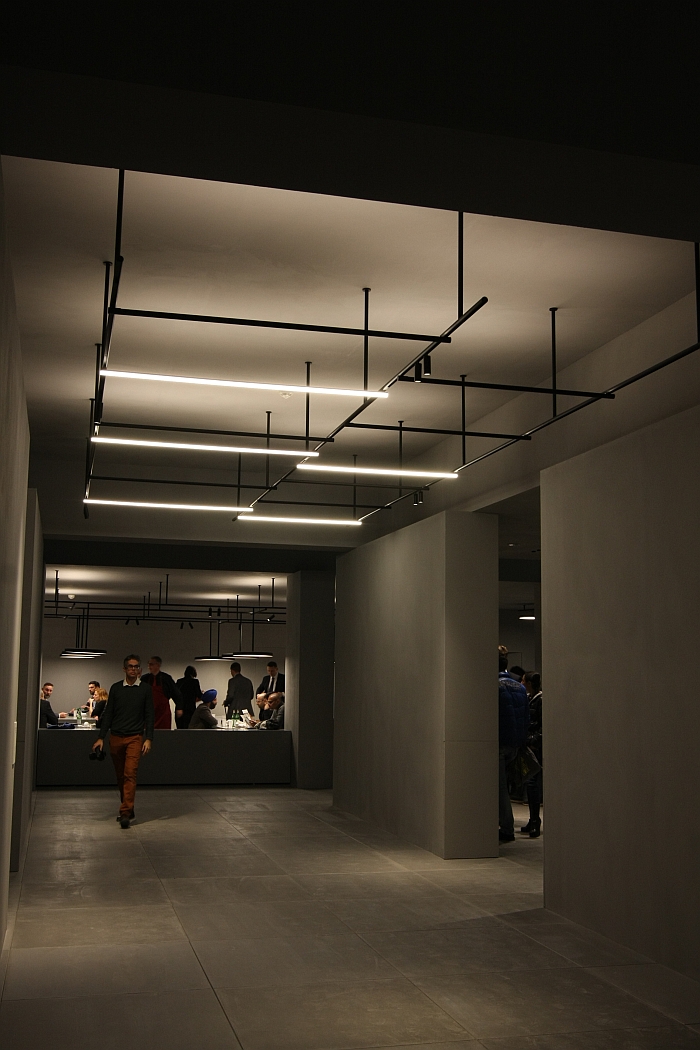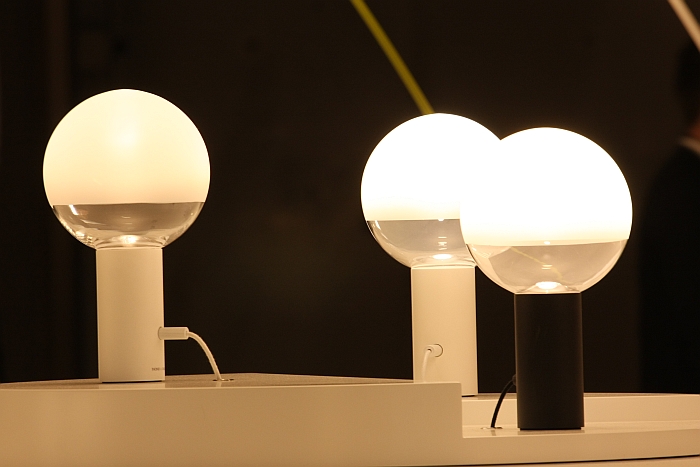Light + Building Frankfurt 2016: High Five!
As the name implies the Light + Building Trade Fair in Frankfurt is largely about architectural lighting rather than domestic lighting or office lighting; were it largely about the later it would be called “Light + Living” or “Light + Working”
It’s called Light + Building.
And as such the biggest stands belong to company’s you will never have never heard of unless you spend your days planning the construction of hotels, hospitals, shopping centres et al and searching for appropriate lighting solutions. Or design car parks or sport stadiums.
Not that Light + Building Frankfurt is only devoted to technical, contract lighting systems. Contemporary domestic and office lighting are also represented.
In terms of domestic lighting the 2016 edition of Light + Building Frankfurt presented a lot, as in an awful lot, of lamps featuring glass in combination with other, natural, materials, principally wood, concrete or marble, thus, we presume accentuating their inherent warmth and domesticity. It also presented an awful lot, as in an awful lot, of lamps in teardrop shapes or with spun copper lampshades in various forms, ideally a teardrop, but, and very pleasingly, only few light bulbs with “ohhh so filigree” filaments masquerading as a design feature. There were a few, most regrettably on one stand whose collection initially caught our attention, until we realised that each and every one had such an abhorrence in it. And so on we strolled. Life’s hard. And far too hard and far too short to waste on filigree light bulb filaments.
But it wasn’t all bad. Here our High Five! from Light + Building Frankfurt 2016
Overlay and Ginkgo by Tim Brauns/ e27 for B.lux
There are two interesting things for us about Basque lighting producer B.lux. The first is that phonetically their name is identical to that of a Swiss producer which is part of global concern much larger than the Basques and who could, presumably, see potential problems in the similarity. And secondly the number of Berlin based designers working for B.lux. We really must investigate the first in more depth, the second we have, and concluded it is related to the density of the networks that flow through the Berlin design community; and as if to underscore the relevance of Berlin to B.lux at Light + Building Frankfurt 2016 they are presenting new objects from the Berlin based designers Werner Aisslinger, Fabien Dumas and Tim Brauns/e27, of which the Tim Brauns works were for us the highlights.
We first saw the Overlay lamp in the e27 atelier last year as an advanced prototype, liked it lot it then and still like it a lot today. Yes, formally it is very reminiscent of Poul Henningsen’s PH lamps, is however inspired by a visit, or possibly visits, to a Berlin flea market, and objects collected there; and unlike Henningsen’s lamps the central feature of Overlay is not the scientifically optimised size and angle of the reflectors but the central glass body over which any number of reflectors can be laid, and relaid, and relaid, “pointing” upwards or downwards as the mood and moment requires. The system that allows this flexibility is so simple, you wouldn’t believe us if you we told you….
Newer is Ginkgo, a hanging lamp based on a ginkgo leaf as if a piece of thread has been woven through the gaps between the leaves and the complete construction hung up to dry. Crafted from aluminium and available in a taller or broader version, Ginkgo is for us an excellent example of Tim Brauns observational approach to design, and an object which is as simple as it is effective and reserved as it is atmospheric.
Wind powered street lighting from Vulkan,
A beautifully simple idea, beautifully executed at that in something traditionally as unbeautiful as a street lamp.
The idea behind German manufacturer Vulkan’s wind powered street lamp isn’t new, nor is there anything especially new in the components Vulkan have used, new is the way they have been brought together, the thinking behind the concept, and for all, at least according to Vulkan, the electrical system which enables such a compact yet powerful system: without wind a fully charged battery can deliver light for up to ten days. Again according to Vulkan, who we have no reason to doubt, but whose information we cannot verify.
Our question as to if you could also add solar panels to the upper surface of the lamp head and then use solar power when sunny and wind power when windy was greeted with the perfectly reasonable answer that Vulkan are based in northern Germany, they have lots of wind but only little sun….. …. And that at this stage of the project the focus is and was about integrating the wind power system in a meaningful and useful fashion, future developments are open.
What particularly appealed to us with the system was that normally engineers like to use fairly robust, monumental, turbines for such projects, turbines which seem more interested in expressing how important they are rather than just getting down to the production of electricity; a states of affairs which invariably causes problems with locals, and with local planning officers, and thus impedes implementation of an eminently sensible idea. Vulkan’s unassuming, well considered, solution solves a lot of such problems, and thus makes wind powered street lighting a realistic option. Which can only be good news.
And many of you will be way ahead of us here…… What you can place atop a lantern can presumably also be placed in the middle, thus allowing for the powering of lamps along major roads, the draft caused by passing vehicles surely being enough to turn the very light turbines and thus charge the battery.
Curtain by Arik Levy for Vibia
Although the Italians, possibly amongst others, have been making similarly shaped objects for centuries, there is something very satisfying in Arik Levy’s illuminated partition system Curtain for Catalan manufacturer Vibia. Available in a range of lengths and replacing the Italian’s traditional glass beads with a more robust synthetic “Curtain”, what is particularly interesting for us about Arik Levy’s approach is that on the one hand the combined elements function as partitions, on the other they have an acoustic function and on the rarely attained third hand, allow for a visual styling of a space, the breaking up of a room without dividing it: one object, four functions and those functions applicable across domestic, commercial, hospitality or office situations. And then there is the very pleasing way the light fades as it “climbs”, and thus allows for a nice gentle passage from the room towards the heavens.
Infra-Structure by Vincent Van Duysen for Flos
Contract interior lighting is largely about technical aspects, functionality generally having more to do with questions of future maintenance, upgrading, expanding, running costs and ultimately price, rather than form. As such most contract interior lighting generally looks the same. Not only because it doesn’t have to formally differentiate itself from its competitors, but because most of those who install such believe that as a society we feel more at ease when everywhere things look the same, the Victorian tourist gaze having long since been been transposed to our urban environments: all our city centres look the same, all our faux-industrial coffee shops look the same, all our book covers look the same, all our interior contract lighting looks the same: Form following perceived acceptance, as it were. The modular Infra-Structure by Vincent Van Duysen for Flos struck us as a little more self-confident, a little braver, a little more willing to express a sense of character. And thus a lot more appealing. And that in a very nicely proportioned and formally well thought system which exudes a certain elegance and grace as much as pleasing light. As a modular lighting system Infra-Structure comes with a range of different LED luminaries and thus can be adapted to meet the specific requirements. And then further adapted when and should those requirements change.
KUULA by Uli Budde for OLIGO (and Thonet)
Launched by Thonet at IMM 2016 for that part of the lighting market covered by Thonet, KUULA by Uli Budde is being launched-launched by co-producer Oligo at Light + Building 2016 for the Oligo clientèle. Yes, we did know in advance. Yes, there was always a very good chance that it would end up in this list. No, that wasn’t certain. Only probable. And, yes, now it is. Because having visited Light + Building Frankfurt 2016 and viewed what was on display we feel it deserves it’s place…..
Tagged with: e27, Frankfurt, KUULA, Light + Building, lighting, Tim Brauns, Uli Budde
